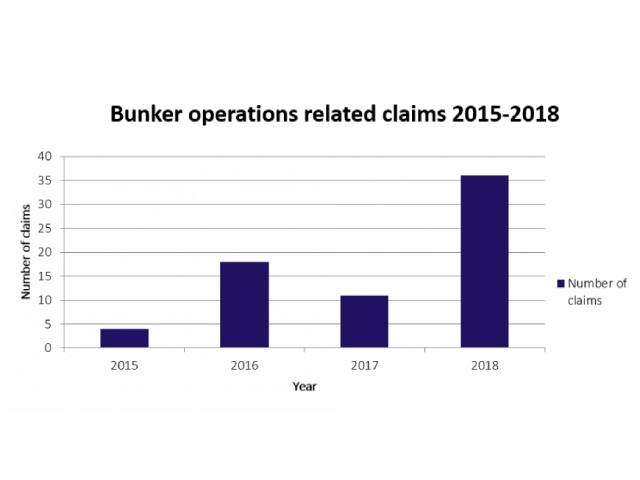Bunkering is one of the most common operations carried out on board, regardless of the vessel type or size. Despite it being a routine operation, disputes may arise, such as those regarding the quantity or quality of bunkers and in some cases the legality, if careful planning is not implemented. The consequences of such situations can vary from machinery breakdowns, to Port State Control (PSC) detentions, to delays, arrests and significant financial and reputational losses. As the shipping industry moves towards cleaner fuels, there is an increased risk of such PSC detentions if the bunkers do not meet the required specifications.
The Club has seen a steady increase in the number of bunker disputes from 4 claims in 2015 to 36 cases in 2018. These incidents are largely due to bunker quality or quantity but a small number are related to alleged illegal activity.
This risk assessment has been produced to assist Members in avoiding such situations and is mindful of the increased scrutiny that bunkers are now receiving due to the introduction of MARPOL Annex VI. This sample risk assessment is not an exhaustive guide to bunkering operations. The content is based on the findings of the Club’s causation analysis, with expanded guidance as far as practicable, to encompass the most salient points for the Club’s Membership.
The Club would like to emphasise that this risk assessment is for guidance purposes only and it is imperative that operators conduct their own risk assessments based on their individual operating procedures together with any requirements of their Flag states and of the local port authority. Vessel owners/operators may apply certain control measures to prevent claims which may arise from such disputes.
Source: Shipowners Club









































